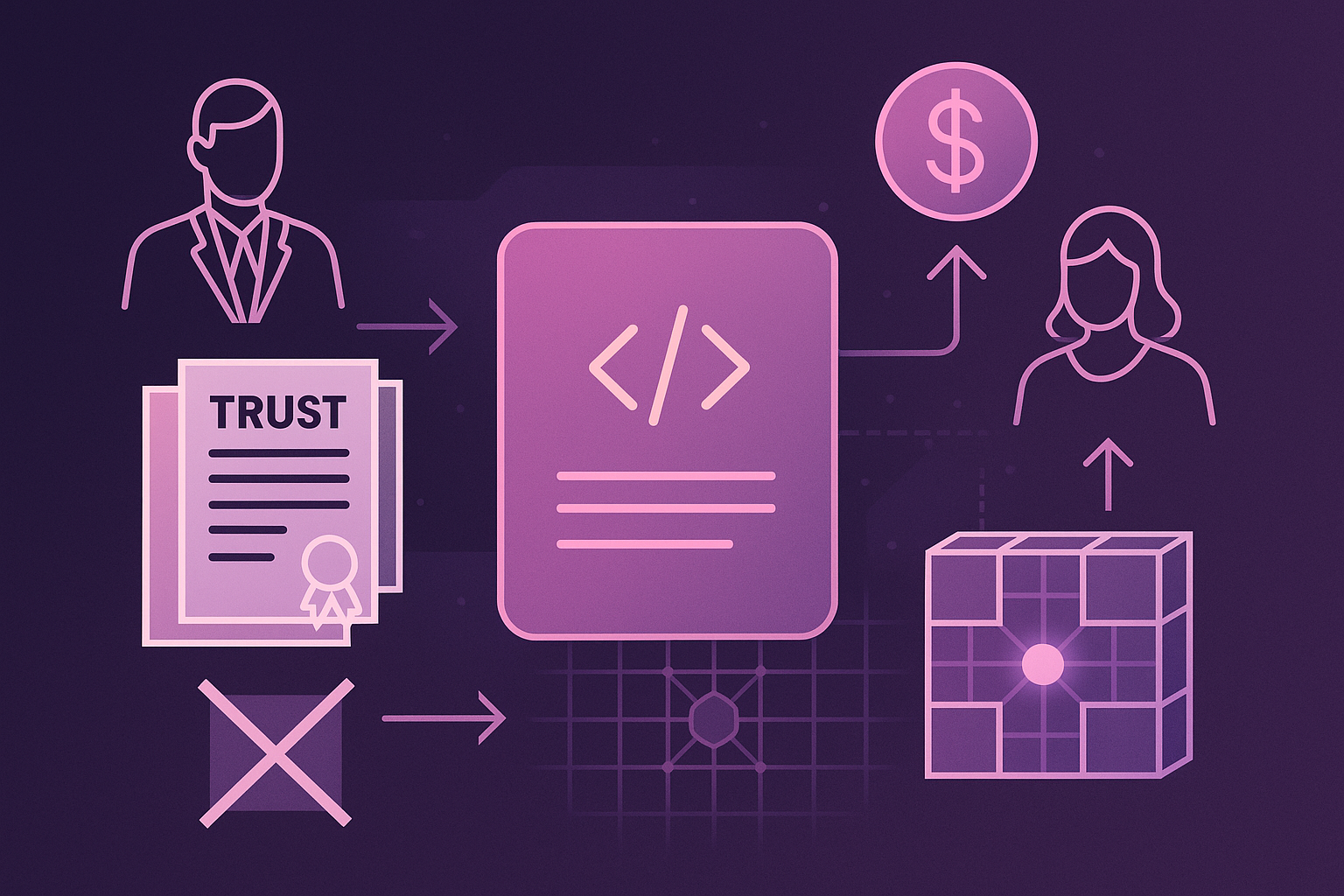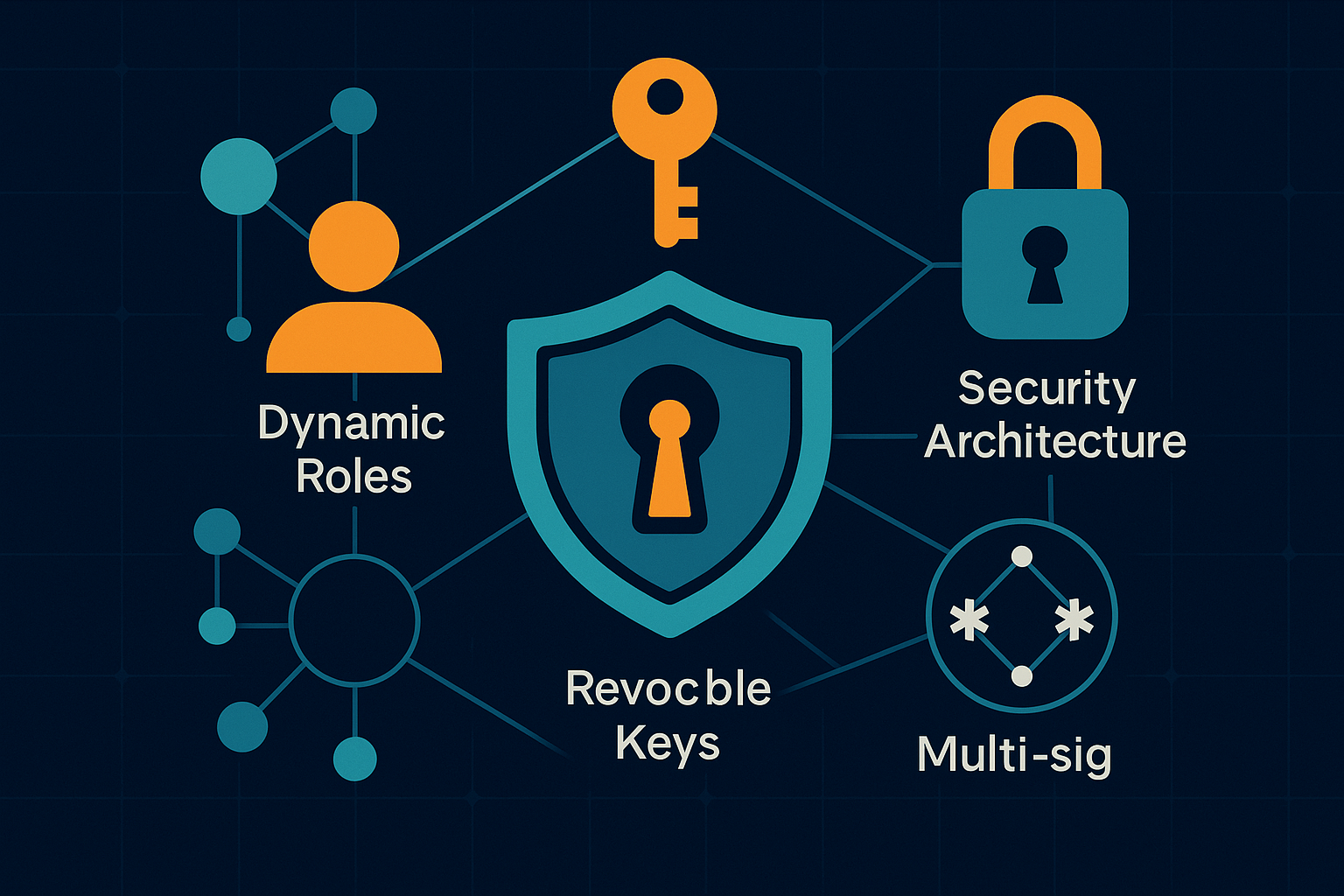For centuries, establishing a trust has meant wrestling with dense legal jargon, paying steep hourly fees, and relying on human intermediaries to keep everything compliant. Programmable trusts—trust agreements executed entirely by blockchain-based smart contracts—upend that status quo. By encoding the rules of the trust in tamper-proof code, WorthyTrust delivers instant enforcement, radical transparency, and dramatically lower costs. In this primer, you’ll learn why programmable trusts are poised to become the default for modern estate planning and asset management, how they work under the hood, and how you can launch one in under half an hour.
The Pain Points of Traditional Trusts
Drafting a conventional trust typically starts with multiple consultations and revisions that add up to anywhere from three to ten thousand dollars in legal fees. Once the deed is signed, you still face annual trustee charges—often one to two percent of the assets—plus wire fees and manual processing every time a distribution goes out. Any amendment, even a minor one, requires fresh paperwork and another round of professional opinions. Beneficiaries remain largely in the dark between quarterly statements, and the entire process drags on for weeks before a single dollar moves. The combination of time, cost, and opacity leaves grantors frustrated and heirs uncertain.
What Makes a Trust Programmable?
A programmable trust is a legally inspired agreement whose terms are embedded in a self-executing smart contract deployed to a public blockchain. Instead of human signatures and notary stamps, code enforces the rules. The smart-contract logic defines the roles of grantor, trustee (often automated in WorthyTrust’s architecture), and beneficiaries; it also specifies triggers—such as a calendar date, a price threshold, or an oracle-verified event—that release funds, rotate roles, or rebalance portfolios. Assets are held directly by the contract, secured by cryptographic keys rather than a single custodian. Permission management relies on multi-signatures or role-based access, preventing any lone actor from hijacking the trust. Oracles, meanwhile, feed the contract verified data so it “knows” when conditions have been met.
How Smart Contracts Replace Paperwork
Every step of a legacy trust maps neatly to a digital equivalent. The lengthy deed drafted by a lawyer becomes a handful of JSON-style parameters that you configure in the TrustOS Builder. Court filings translate to a single transaction hash visible on-chain, providing immutable proof of existence. Distributions that once relied on trustee approval now execute via an autonomous releaseFunds() function, firing the moment preset conditions turn true. Amendments are handled through upgrade calls safeguarded by multi-signature authorization, so changes remain controlled yet inexpensive. Because all actions settle on the blockchain, execution is instantaneous, final, and auditable by anyone with a block explorer.
The Benefits in Plain English
A programmable trust compresses setup time from several weeks to under thirty minutes, largely because no third-party schedules or court dockets are involved. Lifetime costs fall from tens of thousands of dollars to a straightforward on-chain deployment fee plus gas. Transparency jumps from delayed paper statements to real-time visibility: beneficiaries can watch their allocations accrue live. Security improves as well, since funds are locked behind cryptographic principles rather than a single human custodian’s judgment. Because the trust lives on a borderless network, it operates around the clock and across jurisdictions without currency friction. Finally, the modular design of WorthyTrust means you can swap oracles, extend functionality, or add compliance modules without dismantling the entire arrangement.
Popular Use Cases
Digital inheritance is the most intuitive application. A grantor can specify that on a set future date—or upon an oracle-verified life event—crypto holdings and tokenized real-world assets distribute automatically to heirs. Charitable endowments can stream donations over time, ensuring capital efficiency while avoiding administrative overhead. DAO treasuries benefit from code-level guardrails that ring-fence community funds and enforce spending limits transparently. Start-ups frequently rely on programmable trusts for employee token pools that vest without HR-driven bottlenecks, and cross-border families appreciate being able to bypass probate delays and volatile currency exchanges altogether.
Risks and WorthyTrust Safeguards
No technology is risk-free, and programmable trusts are no exception. An uncaught bug in smart-contract code could lead to unintended behavior. WorthyTrust mitigates this by using formally verified libraries and subjecting every release to third-party security audits. Key loss can be catastrophic in blockchain systems, so the platform offers configurable multi-signature recovery and optional social-guardian schemes to restore access. Regulatory landscapes shift, but the contracts are upgradeable: you can insert new compliance modules without redeploying assets. Even oracle failure—the Achilles’ heel of many decentralized systems—is addressed through redundant data feeds and fallback logic that pauses execution if discrepancies appear.
Getting Started on WorthyTrust
Launching your first programmable trust is refreshingly simple. After connecting a wallet, you select a template—inheritance, charity, DAO, or a custom layout. You then define participants, allocate assets, and choose the triggers that release funds or rotate roles. A single click deploys the contract, and the resulting address is immutable proof that your trust exists. From there you monitor activity through any block explorer or inside WorthyTrust’s streamlined dashboard. Power users often add the Portfolio Management plug-in, which enables rebalancing and performance insights without moving assets outside the trust.
Frequently Asked Questions
Many newcomers wonder whether off-chain assets like real estate can reside in a programmable trust. The answer is yes: you tokenize the property via a reputable RWA provider and deposit the resulting token. Others ask what happens if legislation changes. Because the contract is modular, you can update compliance logic without tearing down the trust. Finally, beneficiaries do not need to be crypto-native. You can whitelist a custodial address or connect WorthyTrust’s fiat off-ramp partners so heirs receive their distributions seamlessly in traditional currency.
Conclusion
Programmable trusts distill months of legal labor into mere clicks, delivering cost savings, speed, and a level of transparency paper documents simply cannot match. If you’re ready to future-proof your legacy—or safeguard your organization’s treasury—visit the TrustOS Builder and deploy your first on-chain trust in under thirty minutes. Your beneficiaries will thank you, and you’ll never have to chase paperwork again.
Launch your programmable trust today—only on WorthyTrust.



